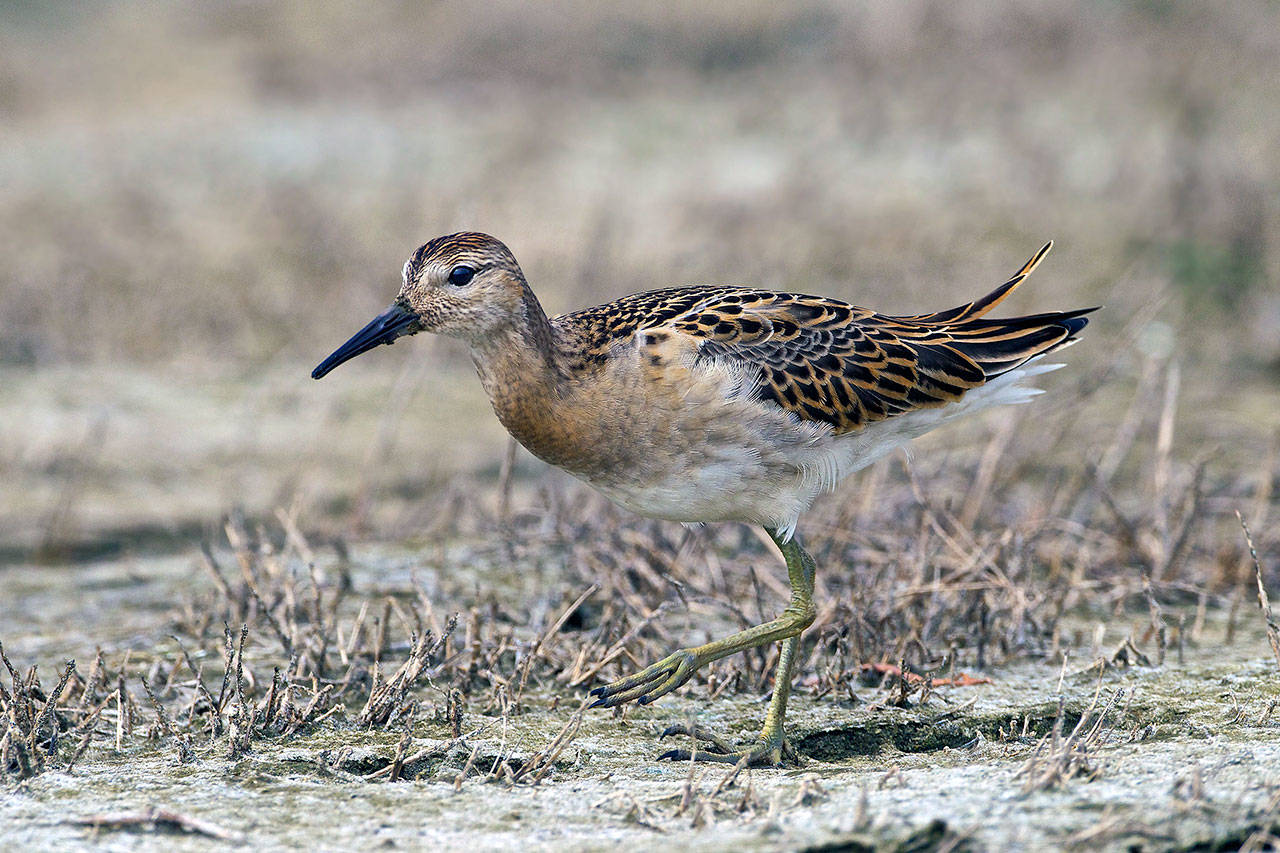By Dianna Moore
Grays Harbor Audubon
Although the Ruff is a fairly uncommon bird it is such a good find that I am including it now, while fall migration is still going. This is about the only time of the year we are lucky enough to see them, and most are juvenile birds. This photo by Gregg Thompson shows the bright colors of an immature bird.
General Description: This bird breeds in Eurasia and migrates down the European side of the Atlantic but we get a few that take a different route out of the far north and wind up on our coast. When one shows up, many birders drop what they are doing and head out here to see this beautiful bird. It is about the size of a dowitcher with pale yellow legs, a buff breast and head, white belly and a dark back with feathers edged in buff. The black bill is medium-long with a slight droop. In flight it shows a white “U” on its tail.
Habitat: Here on the coast the Ruff can be found in open wetlands, coastal ponds, mudflats, lagoons and estuaries. They breed on the Arctic tundra and winter on similar open wetland and marshy locations in southern Europe, northern Africa and some areas of Asia and Australia.
Behavior: In fresh water, Ruffs can be seen wading up to their bellies, but in salt water they are found above the shoreline, They feed on the substrate while walking or running or they can be seen probing the mud while walking slowly with their head down. They can be found in the same areas as Pectoral Sandpipers.
Diet: Like most shorebirds, Ruffs eat insects and invertebrates and include seeds during migration and in winter.
Nesting: Male Ruffs gather in concentrated areas known as leks to display and attract a female. The female chooses a male, mates with him, then leaves the lek to build a nest on the ground, hidden by vegetation. In a shallow depression lined with grass she incubates four eggs for 20 to 23 days then feeds them herself. The young are able to fly at about 25 to 28 days.
Migration: Ruffs are long-distance migrants, breeding in northern Europe and Siberia and wintering in southern Europe and Africa. But they also wander off-course and wind up on both coasts here in North America.
Conservation Status: Here in Washington the Ruff is one of the most numerous Siberian shorebirds seen on our coast. This species is now beginning to breed in parts of Alaska, so they are expanding their range. Habitat loss is a possible issue down the line.
When and Where to Find on Grays Harbor: Over half the records for Ruffs seen are from Ocean Shores, with the Oyhut Wildlife Area being the main place to find them August through October. The first one I saw was on the lawn at the Ocean Shores Sewage Treatment Facility, but I have since seen a few out at Oyhut. It is a thrill to see this beautiful bird.


